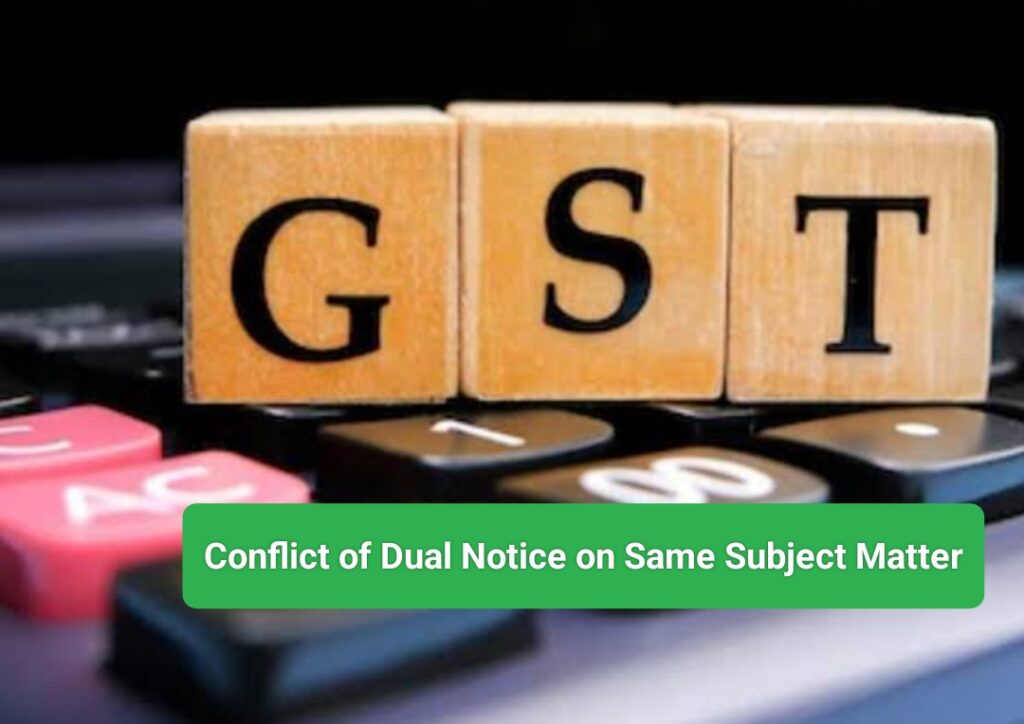Taxpayers can challenge SCNs from unauthorized authorities by invoking Section 6 of the CGST Act and responding diligently to such adjudications.
The introduction of the Goods and Services Tax (GST) in India in 2017 aimed to streamline indirect taxes by creating a dual taxation system shared by the Central and State Governments. However, this has led to instances where both authorities attempt to impose taxes on the same case, resulting in dual jurisdiction conflicts.
To prevent such conflicts, Section 6(2)(b) of the CGST Act, 2017, was introduced, restricting proceedings by two distinct authorities on the same subject matter. Leveraging these provisions ensures taxpayer convenience and prevents procedural duplication.
Also Read: Dual proceedings and trapped Taxpayers – Applicability of Section 6(2)(b) of GST Act
Understanding the Legal Framework
Section 6(2) of the CGST Act, 2017:
- When a designated official issues an order under the CGST Act, they must also issue an order under the respective State or Union Territory GST laws, ensuring transparency between tax authorities.
- If proceedings have been initiated by a proper officer under the State GST (SGST) or Union Territory GST (UTGST) Act, the same subject matter cannot be taken up by a proper officer under the CGST Act.
Key Legal Precedents: The Telangana High Court, in DOTT Services Limited v. State of Telangana (2024 TAXSCAN (HC) 833), quashed an order issued by the SGST authorities, affirming that the CGST authorities had already adjudicated the matter. The court ruled that under Section 6(2)(b), state authorities lack jurisdiction once the central authorities have issued a ruling on the same subject. This case underscores the importance of respecting jurisdictional boundaries in GST assessments.
Also Read: Kerala High Court: Interest & Penalty on ITC Availment under Wrong Head Not Maintainable
Steps to Follow When Facing Dual Jurisdiction Conflicts
- Document All Records: Maintain all relevant documents, including Show Cause Notices (SCNs), orders, and appeals, with a clear timeline of proceedings.
- Prompt Response: Address SCNs, orders, and appeals without delay. Proactively track the proceedings to avoid unnecessary legal complications.
How to Draft a Reply to an SCN in a Dual Jurisdiction Context
When responding to an SCN issued for a case already under adjudication, follow these structured steps:
- Acknowledge the SCN: Confirm receipt and summarize the allegations while referencing prior SCNs, orders, or appeals issued by another authority.
- Cite Relevant Legal Provisions: Clearly state the provisions of Section 6(2) of the CGST Act, 2017, that restrict parallel proceedings on the same matter.
- Attach Supporting Documents: Provide copies of all pertinent documents proving that another tax authority is already handling the case.
- Reference Legal Precedents: Mention relevant case laws, such as DOTT Services Limited v. State of Telangana, to strengthen your argument.
- Request for SCN Withdrawal: Conclude your response with a formal request to drop the SCN, citing judicial overreach and compliance with applicable laws.
Conclusion
Dual jurisdiction conflicts in GST assessments highlight the necessity for clear statutory compliance and effective communication. Taxpayers can challenge SCNs from unauthorized authorities by invoking Section 6 of the CGST Act and responding diligently to such adjudications. By ensuring factual accuracy, procedural validity, and legal compliance, taxpayers can protect themselves from undue liabilities while adhering to GST regulations.
By following these best practices, businesses can safeguard their interests and prevent unnecessary financial burdens arising from jurisdictional conflicts.
READ MORE
Orissa High Court Reduces Tax Deposit Requirement for GST Appeal Stay
Proceedings Against Deceased Cannot Continue Against Legal Representatives: Karnataka HC
Supreme Court Quashes Disproportionate Assets Case, Advocates Dynamic Financial Review

